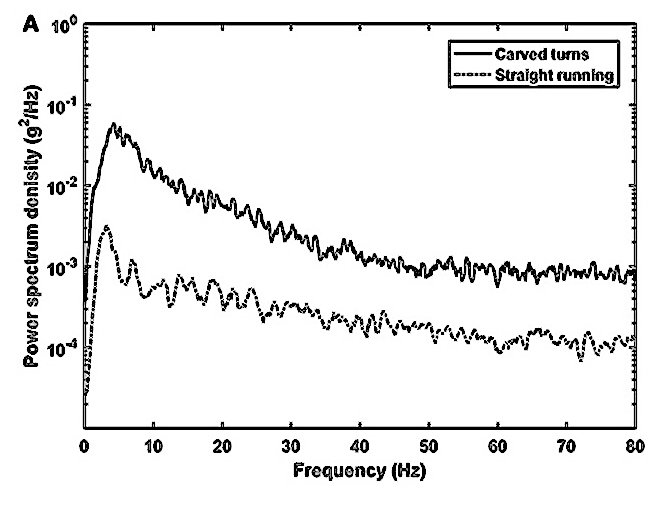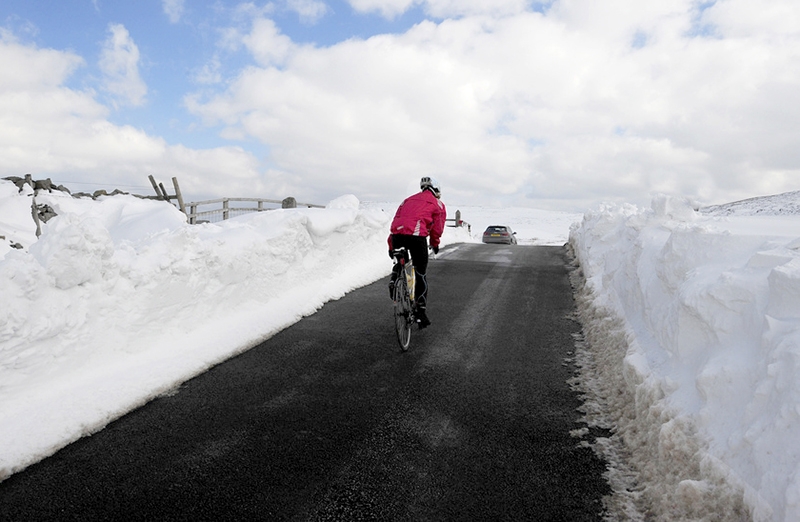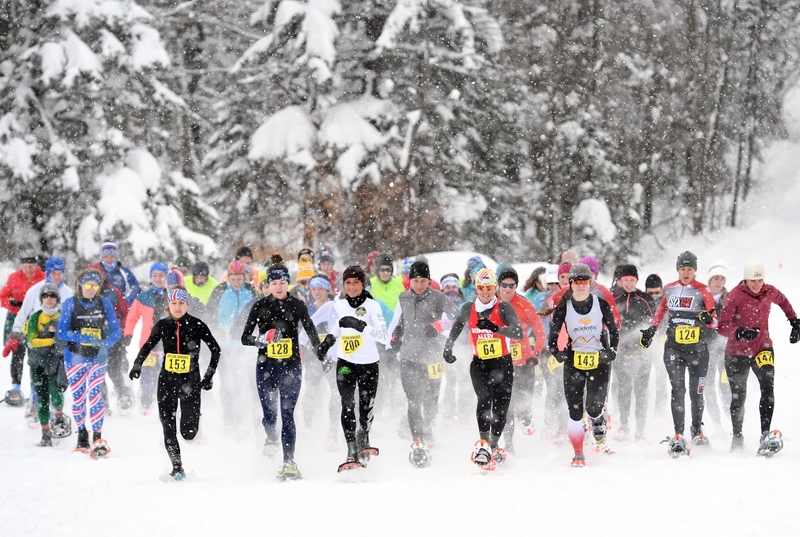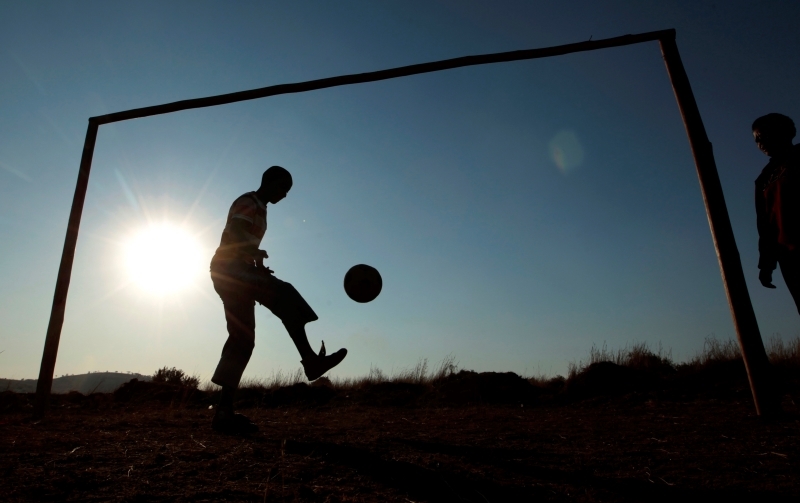You are viewing 1 of your 1 free articles. For unlimited access take a risk-free trial
Snow sport injuries: know the risks, aid prevention!

As we enter winter proper, SPB looks at what the scientific research has to say regarding snow sports injury and injury prevention...
Skiing and (increasingly) snowboarding have become mass-participation sports, enjoyed by participants of all ages and abilities. For example, in North America alone, data shows that there are typically more than 78 million annual visits to ski areas by skiers and snowboarders of all ages(1). Moreover, the popularity of family holidays means that snow sports are not just enjoyed by adults, but by younger participants too. Studies have shown that 20% to 30% of snow sport participants are children and adolescents, while an estimated 15% of Canadians over the age of 12, and 4% of the US population over the age of seven, reported participating in alpine skiing, cross-country skiing or snowboarding at least once in the 2008-2009 season(2).However, with increasing snow sport participation comes an increased rate of traumatic injury, and the data points to a significant risk. Figures from US ski resorts showed that during the 2002 season, an estimated 77,300 skiing and 62,000 snowboarding injuries were treated in US emergency departments alone, including 10,700 traumatic brain injuries(3). Given the steady growth in snowsport popularity, that figure is likely to under represent the situation over the past few years. Another study found that snowboarding is responsible for an estimated 25% of nonfatal outdoor injuries requiring emergency care(4).
Studies conducted in a number of countries across Europe and North America have indicated that the risk of injury for skiers and snowboarders is approximately 2 to 4 injuries per 1000 participant days, with the highest risk in snowboarders(5-9). Children and teenagers in the 7-17 years age bracket appear to have higher rates of injury than younger and older participants(2). Injuries requiring referral to a tertiary trauma centre have been estimated at 0.06 to 0.07 per 1000 participant days(10).
More generally, data collected worldwide shows skiing and snowboarding are risky pursuits (see box 1), with 2 to 4 injuries per 1000 participant days - the highest risk being in snowboarders and younger participants(11-16). The fatality rate is also comparatively high, being on a par with cycling and car accidents. In terms of injury types, the data shows that bone fracture is the most common, followed by muscle strain, torn ligaments, joint injuries and dental trauma(17). Surprisingly, concussion is the least common injury; this may be largely thanks to the ubiquitous use of helmets.
Box 1: How risky is skiing?
Most serious skiing accidents involve high-speed collisions with stationary objects such as trees and lift poles. In such collisions, the incidence of head injury is high, increasing the risk of fatality. Studies on this risk shows that the skiing deaths are estimated to occur at a rate of 0.5 to 1.9 per 1 million participant days(18,19). In the 2009/10 season, there were 38 deaths in the US with a rate of 0.64 deaths per million visits(20). To put this into perspective however, the risk of a skiing fatality is not significantly higher than some other common human activities; the risk of death is roughly around the same order of magnitude as death in car accidents or cycling - about 0.1 deaths per million hours of exposure(21). Moreover (as we shall see later) there are ways of reducing this risk.Figure 1: Relative risk of the most common skiing and snowboarding injuries(22)

Typical injuries sustained in snowsports
A number of reviews have been published that summarize the epidemiology of skiing and snowboarding injuries. Skiers tend to sustain injuries to the lower extremities; snowboarders on the other hand are much more likely to sustain injury to the upper extremities (see figure 1)(23,24). Knee injuries are the most common type of injury in skiing and constitute up to 36% of all ski injuries, according to the literature(25). Snowboarders sustain more torn ligaments and sprains/strains, caused by a) standing sideways on the board and b) the absence of a security binding which opens on its own in case of a fall. In a snowboard fall, the wrists are especially vulnerable to injury, especially on impact. For a more detailed discussion of these risks, readers are directed to our sister publication Sports Injury Bulletin.Vibration-injury risk
Understandably, much of the previous research into snow sports injury has focused on acute/traumatic injury. However, over the past ten years or so, more recent research has looked at overuse injuries, particularly in skiers. In particular, researchers have identified that skiers are – like other athletes - prone to overuse injuries affecting the lower back, which is the most common overuse injury in skiers, often resulting in chronic lower-back pain (LBP)(26,27). One theory as to the cause of LBP in skiers is their exposure to large amounts of whole body vibrations (WBV), which occur during manoeuvres such as ploughing, short swinging, and carved turns.Exposure to WBV in connection with various occupations is known to be strongly related to low-back pain(28), which is why international health and safety standards such as ISO 2631 and EU directive 2002/44/EC exist to protect workers from excessive WBV. To investigate this further, an international team of scientists studied WBV in skiers(29). A group of former competitive ski racers were asked to perform a number of skiing manoeuvres while fitted with body accelerometers (to measure forces/vibration) and a GPS positioning system. These manoeuvres were:
- Straight running
- Ploughing
- Basic swinging
- Snow plough swinging
- Short swinging
- Carved turns
Figure 2: WBV comparison between straight running and carved turns(29)

Upper plot carved; lower plot straight running. NB: note logarithmic scale – the magnitude of WBV is approximately 100-fold higher during carved turns.
Spinal-injury risk
Snowboarders are at an even higher risk of acute injury than skiers, and one particularly concerning injury type is spinal injury, which can cause disability and even death in snow-sport accidents. Back protectors can be used to prevent spinal injury but the current testing standards do not evaluate the flexion-extension resistance of these protectors, and to make matters worse, the injury risks due to over flexion have not been studied.However, in a one study, researchers examined (using a 3-D model) the flexion-extension range of motions of the thoracic-lumbar spine during a typical snowboarding backward fall under varying conditions (eg different speeds, slope gradients, body posture, angle of approach etc)(30). Comparing their data with that from validated vehicle-pedestrian impact data, they found that there was a high risk of spinal injury in most of the 324 accident scenarios. In particular, the thoracic segment of the spine (T6-T7) had the highest injury risk and incidence, which was exacerbated by higher speeds and larger torso size. The conclusions of this study were that a) back protectors should always be worn by snowboarders and that b) back protectors should protect the vulnerable thoracic vertebrae and be of the correct dimensions to suit the snowboarder's body dimensions.
Head-injury risk
Although head injuries in snowsports are not as common as musculoskeletal injuries, when they do occur, the consequences can be severe or even fatal; indeed, brain trauma is the biggest cause of death during snowsports. In a detailed analysis of 57 head impact injury videos during 29 alpine, 13 snowboard and 15 freestyle events, most athletes (84%) impacted the snow with the skis or board first, followed by the upper or lower extremities, buttocks/pelvis, back and, finally, the head(31). However, 47% of all falls did involve head impacts and 28% involved two or more head impacts. Of these, 10% of athletes lost their helmets during the fall.The results above suggest that the use of properly fitting and secured head protection remains absolutely crucial for all snow sport athletes venturing out onto the slopes – something confirmed by another study on 549 young skiers and snowboarders participating in snow sports in Colorado(32). It concluded that young athletes who were visiting from out of state were less likely to be wearing a helmet when injured, and importantly, more likely to be severely injured as a consequence; helmeted skiers and snowboarders who were admitted to intensive care had significantly lower injury severity scores than those who were not helmeted.
Equipment and safety
As we have seen above, the use of equipment such as helmets and back protectors should be considered an essential element of any injury-risk reduction strategy. However, recent research has also identified other aspects of equipment that can play a role in injury risk. One study has examined the use of alpine touring boots, which are primarily designed for climbing mountains and snow skiing down on back-country routes(33).In recent years, there has been a growth in the practice of using alpine touring boots in proper alpine ski bindings (which are really designed for alpine ski boots – not alpine touring boots). With that in mind, the researchers investigated the effect on the retention-release characteristics of alpine touring boots used in proper alpine bindings. The results showed that only around one third of the alpine touring boots released appropriately when used in alpine ski bindings.
The researchers also discovered that changing the visual indicator settings on the bindings (that control the release torque of an alpine system) had little or no effect on the release torque when using alpine touring boots in alpine ski bindings. It was also apparent that while many alpine touring boot/alpine bindings released appropriately in ski shop tests, they did NOT release appropriately in the more complex loading cases that simulated forward and backward falls. The results led the researchers to conclude that the use of alpine touring boots with alpine ski bindings is not recommended as it could increase the likelihood of lower leg injuries.
Bindings and ACL injury
In another study related to binding release, researchers have investigated the link between anterior cruciate ligament (ACL - frontal knee) injury in female skiers and binding release failure(34). To do this, data was collected from 498 recreational skiers who had suffered an ACL injury while skiing (complete rupture or partial rupture), over two thirds of whom were females. The researchers examined the link between injury risk and the following parameters:- Age
- Sex
- Height
- Weight
- Self-reported skill level and risk taking behaviour
- Ski length
- Date of last binding adjustment
- Perceived speed at the moment of injury
- Type of fall
- Binding release failure of the ski of the injured knee
A breakdown of the results between partial ACL tears and a complete rupture showed that binding release failure was a bigger factor in the latter. Overall, these findings coupled with those above suggest that correctly set up and maintained ski/boot binding systems are absolutely essential when seeking to reduce injury risk. It is beyond the remit of this article to discuss this topic in depth; however, an excellent video on this topic can be found in the video link below.
Ski binding adjustment instructions
Physical conditioning for snowsports and injury prevention
Strength, endurance and cardiovascular fitness are central components in sports injury prevention across a wide range of sports, and yet in snowsports, there seems to be a much greater emphasis on equipment-based and third party solutions. A comprehensive and systematic review of the literature looked at injury prevention recommendations specific to recreational alpine skiers and snowboarders. The focus was to discern recommendations that targeted physical fitness, exercise and/or training in the prevention of musculoskeletal injuries in these two sports(35). Studies were included if they addressed injury prevention, recreational alpine skiing or snowboarding and musculoskeletal injuries and articles on elite athletes were excluded. Overall, 80 recommendations for the prevention of musculoskeletal injuries in recreational alpine skiers and snowboarders were identified and classified into five main groups:- Equipment use
- Education and knowledge
- Awareness and behavior
- Experience
- Third-party involvement
Box 2: General principles and practical recommendations for skiing/snowboarding conditioning
Skiing and snowboarding require both technical skills and physical attributes such as strength, endurance, agility and balance. A conditioning program that improves these areas may therefore help to reduce the risk of injury.- Strength - Higher levels of muscular strength can improve a skier’s/snowboarder’s ability to relax and still maintain control, while making quick adjustments needed on uneven terrain. All the major muscle groups of the body (especially the core and legs) are used in these sports and should be included in a strength training program.
- Flexibility – Flexibility training skiers and snowboarders should focus on the lower extremities although snowboarders need to stretch the upper body as well.
- Endurance – Like strength, higher levels of endurance allows the skier/snowboarder to relax and focus more easily on the technical demands. Good dry-land cardiovascular endurance training includes road, mountain or stationary biking, which builds stamina and focuses on the leg muscles used during skiing and snowboarding.
Summary
As our understanding of injury risk in snow sports continues to increase, more effective strategies to reduce risk can be developed. In this article, we have seen that skiers and snowboarders should pay particular attention to the correct use of head and back protection, while also optimizing the boot/ski/board interface. In particular, the practice of using alpine touring boots in proper alpine ski bindings is NOT recommended. More advanced downhill skiers should also be aware of overuse injury risk and adjust their training loads and focus on manoeuvres accordingly. Meanwhile developing excellent levels of strength and overall conditioning is also recommended.References
1. National Ski Areas Association. Kottke National End of Season Survey 2010/11: Final Report. Table 6: Estimated US Ski Injury Skier Visits by Region 1978/79 – 2010/11. www.nsaa.org/nsaa/press/historical-visits.pdf
2. Inj Prev 1996;2(4):286-9
3. J Trauma 2005;58(1):112-8
4. Wilderness Environ Med 2008;19(2):91-8
5. Br J Sports Med 2004;38(3):264-8
6. Sports Med 2004;34(2):133-9
7. Br J Sports Med 2002;36(2):135-40
8. Am J Sports Med 2004;32(1):96-103
9. Am J Sports Med 1995;23(5):597-600
10. Am J Surg 2009;197(5):560-4.
11. Inj Prev 1996;2(4):286-9
12. Br J Sports Med 2004;38(3):264-8
13. Sports Med 2004;34(2):133-9
14. Br J Sports Med 2002;36(2):135-40
15. Am J Sports Med 2004;32(1):96-103
16. Am J Sports Med 1995;23(5):597-600
17. Schweiz Monatsschr Zahnmed. 2013;123(7-8):655-9
18. Inj Control Saf Promot 2004;11(4):281-5
19. Injury 2003;34(12):892-6
20. National Ski Areas Association. Facts About Skiing/Snowboarding Safety: Updated March 2006. www.nsaa.org/nsaa/press/0506/facts-about-skiing-andsnowboarding.asp
21. Sports Health. 2009 Nov;1(6):486-92
22.Schweiz Monatsschr Zahnmed. 2013;123(7-8):655-9
23. Acta Orthop Scand 2001; 72: 657–660
24. Am J Sports Med 1999; 27: 94–97
25. Am J Sports Med 1999; 27:381–389
26. Am J Sports Med. 2015 Aug; 43(8):2042-8
27. Br J Sports Med. 2017 Jan; 51(1):1-2
28. Int Arch Occup Environ Health. 2015 May; 88(4):403-18
29. Front Physiol. 2018; 9: 204
30. Scand J Med Sci Sports. 2019 Mar;29(3):450-459
31. Br J Sports Med. 2018 Jan;52(1):61-69
32. J Pediatr Surg. 2017 Feb;52(2):349-353
33. J Appl Biomech. 2017 Oct 1;33(5):330-338
34. Br J Sports Med. 2016 Jan;50(1):37-40
35. Sports Med. 2013 May;43(5):355-66
36. Br J Sports Med. 2008 Jun; 42(6):394-41
Newsletter Sign Up
Testimonials
Dr. Alexandra Fandetti-Robin, Back & Body Chiropractic
Elspeth Cowell MSCh DpodM SRCh HCPC reg
William Hunter, Nuffield Health
Newsletter Sign Up
Coaches Testimonials
Dr. Alexandra Fandetti-Robin, Back & Body Chiropractic
Elspeth Cowell MSCh DpodM SRCh HCPC reg
William Hunter, Nuffield Health
Keep up with latest sports science research and apply it to maximize performance
Today you have the chance to join a group of athletes, and sports coaches/trainers who all have something special in common...
They use the latest research to improve performance for themselves and their clients - both athletes and sports teams - with help from global specialists in the fields of sports science, sports medicine and sports psychology.
They do this by reading Sports Performance Bulletin, an easy-to-digest but serious-minded journal dedicated to high performance sports. SPB offers a wealth of information and insight into the latest research, in an easily-accessible and understood format, along with a wealth of practical recommendations.
*includes 3 coaching manuals
Get Inspired
All the latest techniques and approaches
Sports Performance Bulletin helps dedicated endurance athletes improve their performance. Sense-checking the latest sports science research, and sourcing evidence and case studies to support findings, Sports Performance Bulletin turns proven insights into easily digestible practical advice. Supporting athletes, coaches and professionals who wish to ensure their guidance and programmes are kept right up to date and based on credible science.









